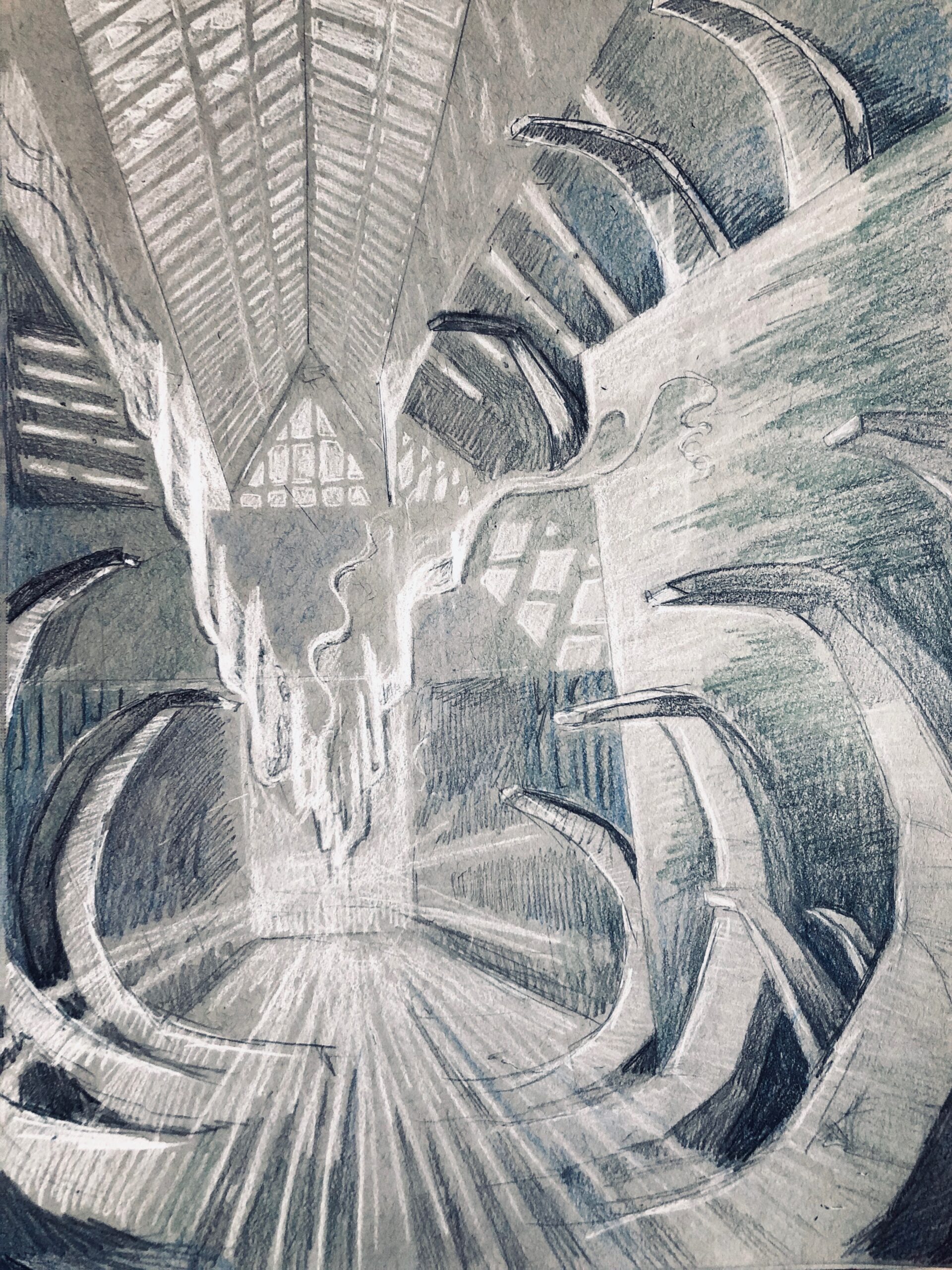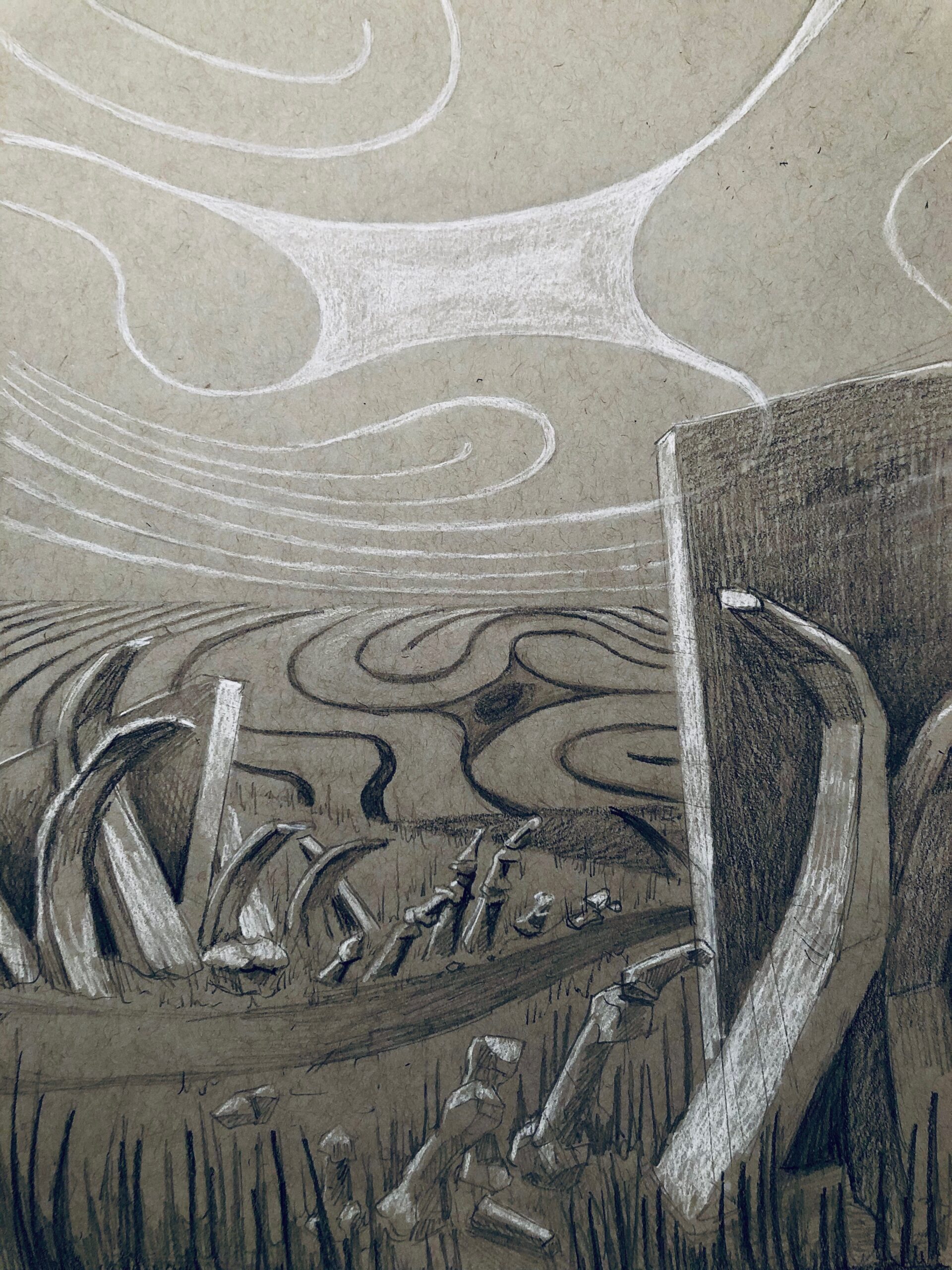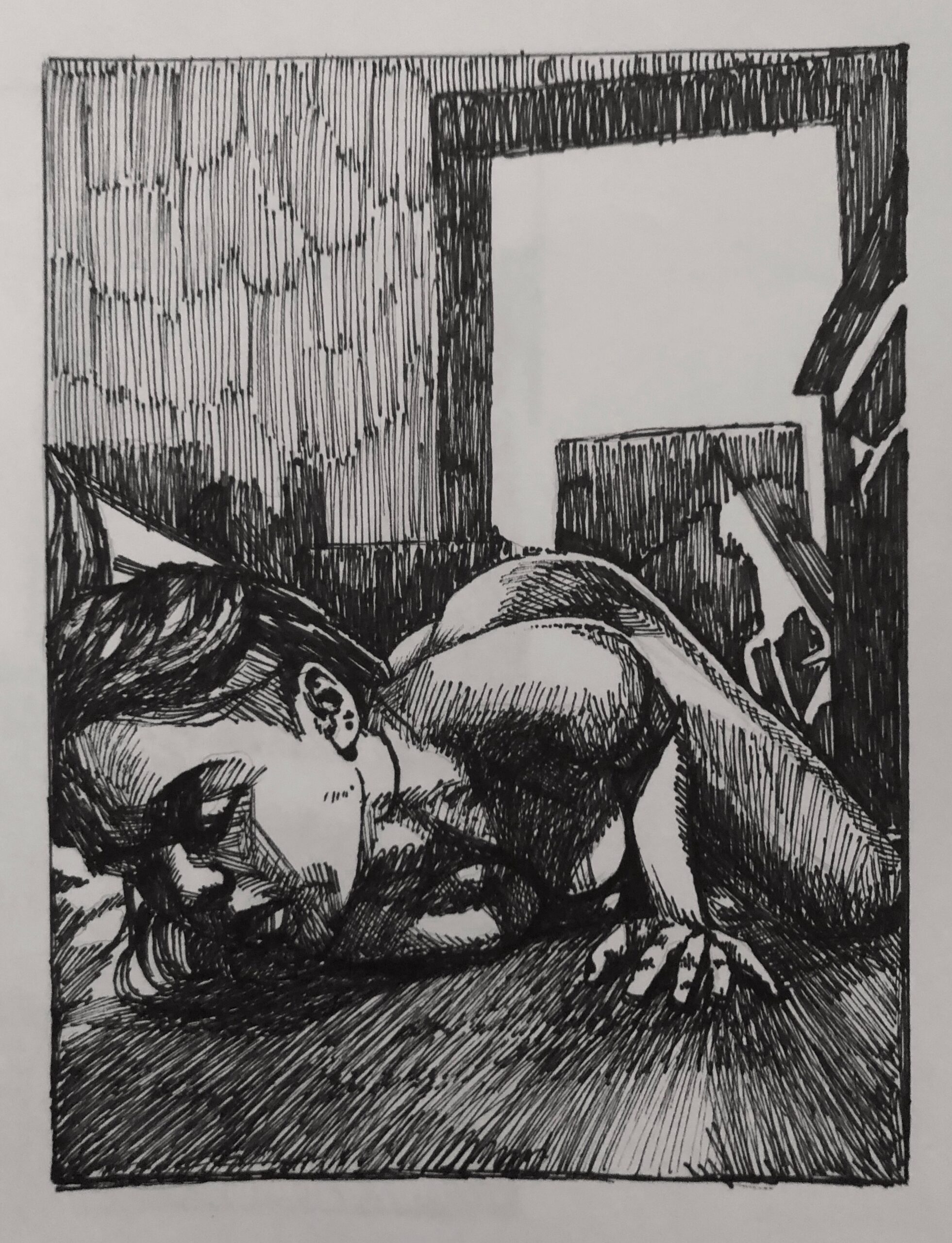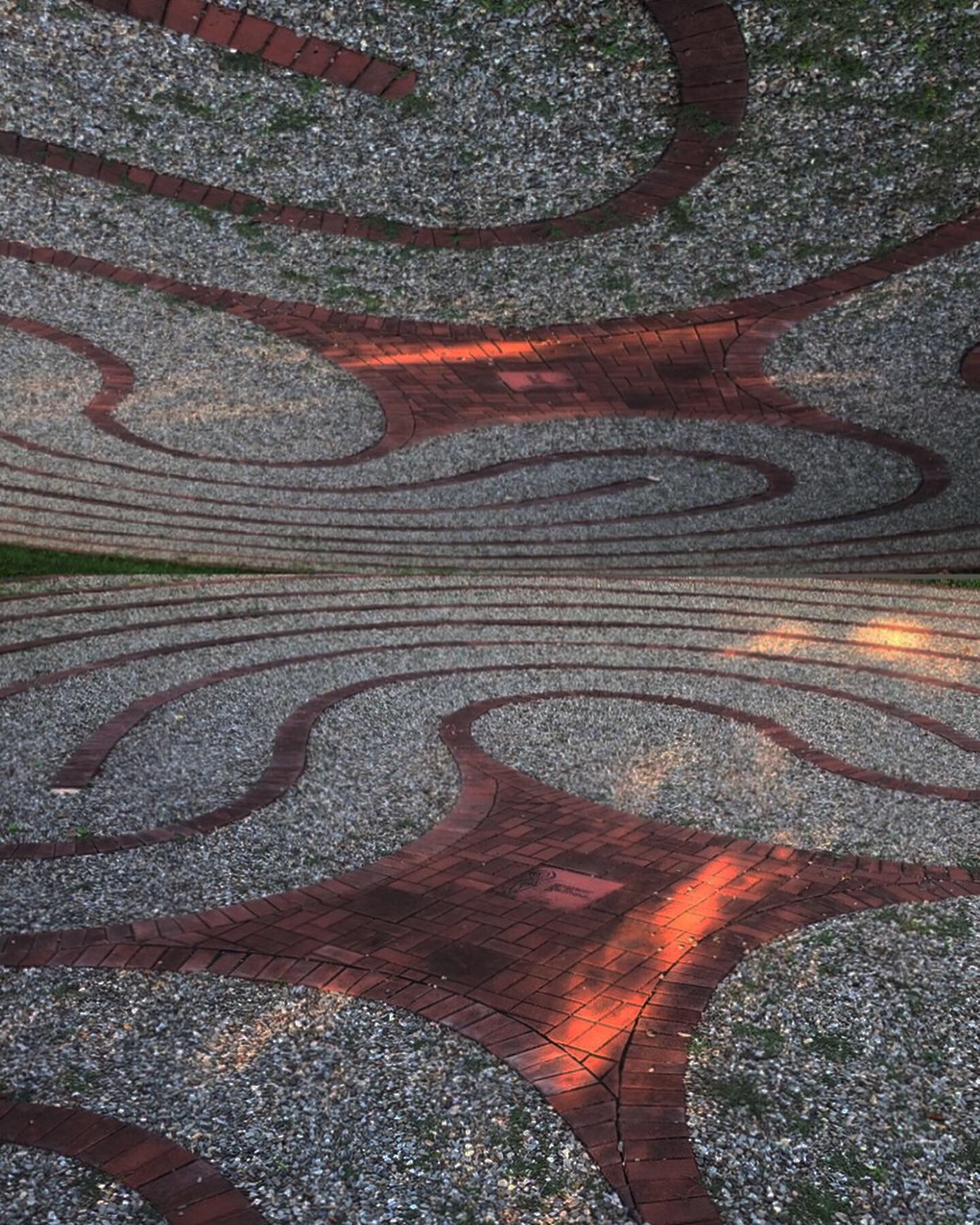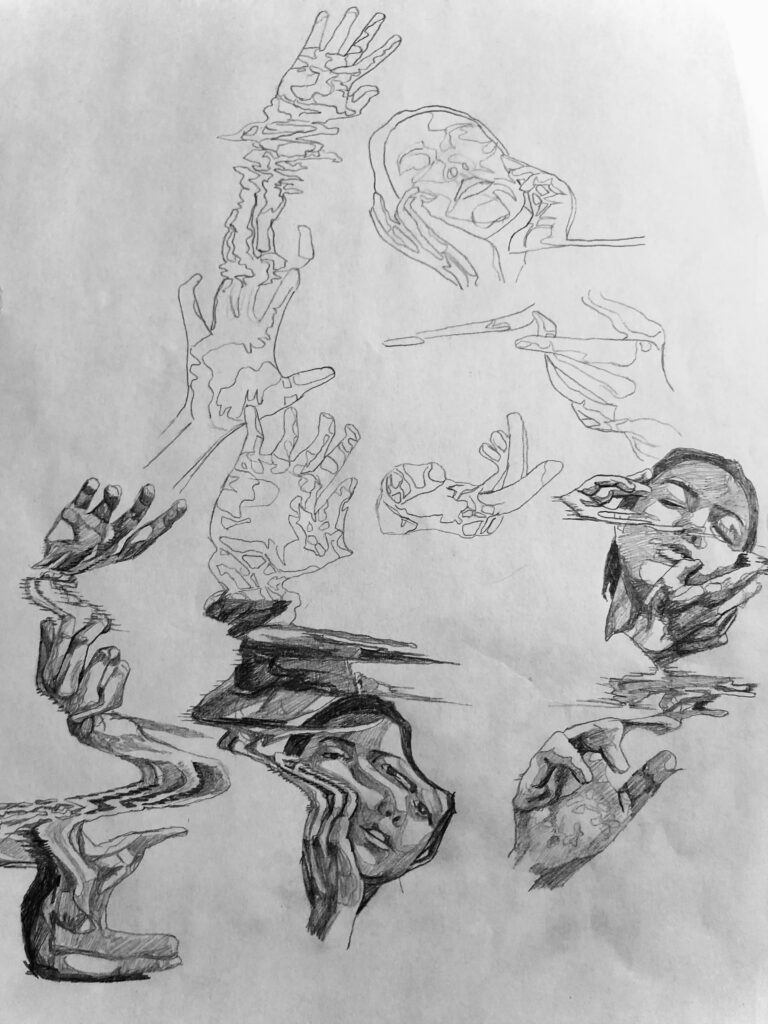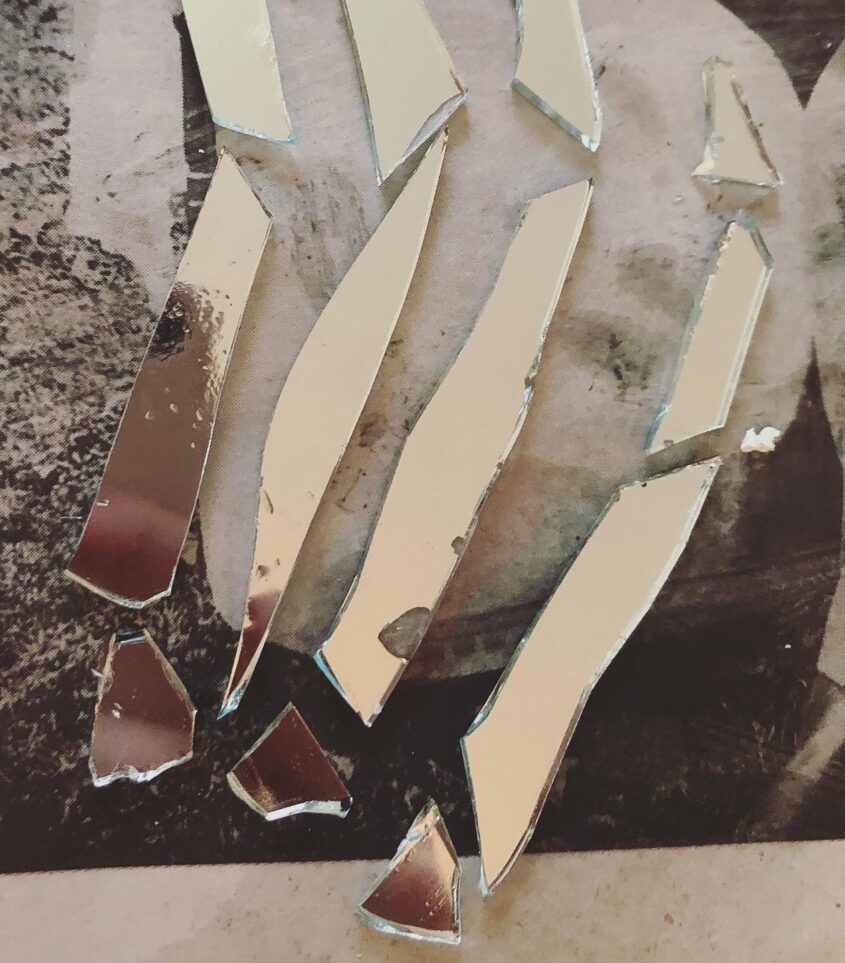
Left: All Air, graphite, 8″x11″. Right: Untitled (phalanges), photograph of cut mirror and newspaper.
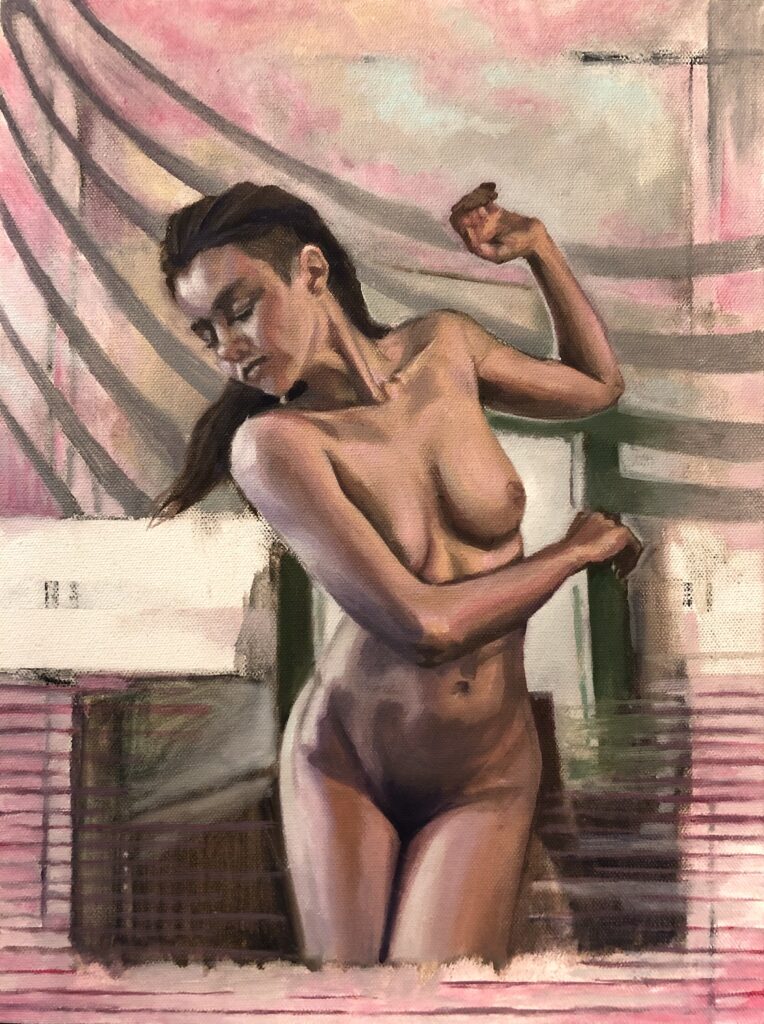
Artist Statement
This year, I brought my studies of the figure and skeletal forms into conversation with the visual motifs and formal qualities in Jim Henson’s film Labyrinth. A labyrinth is a spiraling path, often unicursal, that leads to a center. The acts of entering and exiting a labyrinth happen on the same path. While the labyrinth in the film is constructed around a center, it does not have the single continuous path into and out of that center. Instead, the architecture surrounding the center looks more like a maze. A maze is made of multiple paths that do not necessarily lead to a center. The entrance and exit of a maze are separate.
As the film’s main character, Sarah, begins her journey to Jareth’s castle at the center of the labyrinth, the world becomes increasingly incoherent. In one scene, Jareth releases a small crystal orb into the sky that finds Sarah in the labyrinth. The orb becomes the container for the film’s ball scene. Jareth evades Sarah, his fleeting image among mirrors and suspended glass part of his allure. When he finally goes to her, they dance until she becomes disoriented and runs from him. She strikes the crystal orb, shattering it from the inside and disappearing its contents. In another scene, Sarah reaches Jareth’s castle to find a nonsensical architectural landscape based on M.C. Escher drawings. Jareth wanders the interior structure, the movement of his body as impossible as the configuration of stairs and passages. Sarah’s movement is limited, so she jumps from a ledge. As she falls to a landing, the castle begins to disintegrate upwards. These motifs queer the spatiotemporal conditions of the film. Time and space extend in all directions at once — beckoned, transgressed, and shattered by an utterance, a memory, or a desire that in an instant sends one elsewhere. Desire is the technology of this world.
I used this collection of imagery, with myself posing as my own figure model, to begin to build the bodies and worlds that I live in. My work is grounded in contemporary realism, surrealism, figurative painting, and collage. Using collage as a sketching process for my compositions helps me to see how the materials that animate my life interact and relate to one another. This was an erotic process which I understand in relationship to Paul B. Preciado’s assertions of bodies as architectural, desire as machinic, and sexuality as “a technological assemblage between several previously disconnected bodies” (2018, 15). In the drawings and paintings that came from these assemblages, I worked through impulses and questions about space, time, multiplicity, repetition, thresholds, fragmentation, and interruptions.
My work and understanding of my process is informed by artists who taught me that pleasure, desire, and dreaming are necessary for building worlds. These artists have also taught me to surrender; the worlds I dream of are already here. Among my influences are Natalie Diaz and Naudline Pierre. I was introduced to Pierre’s work recently, and was taken by the color and varying levels of transparency in her paintings. In an interview with Makayla Bailey for The Studio Museum, Pierre explains that her process of selecting colors is driven by her training in color theory and an intuitive desire to choose colors she feels taken care of and opened by. I knew that touch was important to my process, and recognized that I also choose motifs and formal qualities of my work by how they hold and move me. In this interview, she also explains her relationship with the figure in her paintings, who she calls her “twin in another universe”. They love and make each other as she paints. I found by posing as my own model that I could release the multiples inside me. My figures are real to me. They are loving, they feel pain and inflammation, and they get turned on. They are intimate with thresholds.
Natalie Diaz provides me with a critical understanding of the relationship between sensuality and repetition. In a lecture on poetry and craft for UNCW Writer’s Week, she encouraged the attendees to consider repetition not as recurrence but as a way of calling back to what came before, a reorganizing of energy, an opportunity to enliven the work with one’s body, and as a way of communicating desire.
When I create work through my desire I am challenged and transformed. Worlds slip into me and I into them. I believe that desire is a portal through which we may bring ourselves to one another. Building my worlds and my body over and over becomes how I stay here. Repetition shows me that there is more, that abundance is available where we care, where we are accountable, and where we enter into conversation with those who came before and alongside us. Desire, then, may also be the portal through which the living and the dead convene. I believe in the simultaneity of worlds and I am invested in those of us who find ourselves between them. I want to be with lovers, perverts, survivors, and those for whom all that swells and rushes is also a requiem. My thesis is a love letter to those whose existences are fashioned by straddling worlds. I am grateful for and made possible by all who, as Dr. Maura Finkelstein once wrote to me, are “in pursuit of real, imagined, and remembered worlds.”

